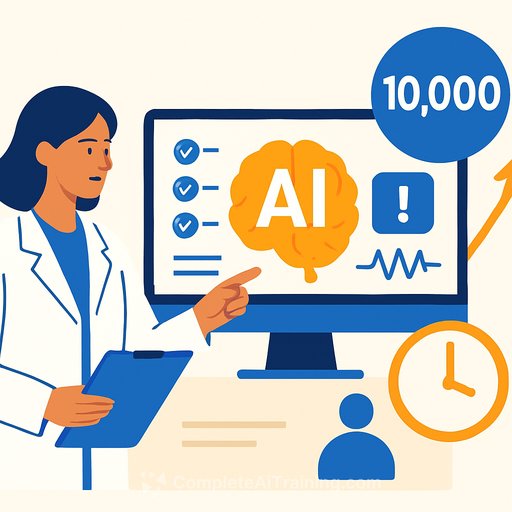Von der Leyen outlines plan for a European AI-powered healthcare network
The European Commission plans to connect hospitals, researchers, and regulators through an AI-enabled health network. The goal: faster cancer diagnosis, smarter triage, and shorter paths from molecule to medicine.
For healthcare leaders, this is a signal to get your data, governance, and clinical validation playbooks ready. Here's what matters and what to do next.
What this network could enable
- AI models that support earlier cancer detection from imaging and pathology, shared and validated across borders.
- Privacy-preserving data access for research and drug discovery (think federated learning, secure compute, audit trails).
- Common evaluation hubs to test models on diverse EU cohorts before clinical use.
- Procurement templates and reference standards to speed safe adoption in hospitals.
Expected benefits for care delivery
- Faster time-to-diagnosis and reduced variability across regions.
- Clinical decision support that fits into existing workflows (EHR, PACS) and uses standards such as FHIR, SNOMED CT, and ICD-10.
- More efficient trial matching and biomarker discovery, especially for oncology.
Guardrails you must plan for
The EU AI Act sets strict requirements for high-risk medical AI: risk management, data governance, transparency, human oversight, post-market monitoring, and incident reporting. Expect conformity assessments and tight documentation.
Read the overview from the European Commission: EU approach to AI.
Cross-border data use will likely rely on the European Health Data Space to standardize sharing and consent while protecting privacy. Details here: European Health Data Space.
What hospitals and health systems should do now
- Run a data quality audit for imaging, pathology, genomics, and EHR fields. Map gaps, missingness, and label drift.
- Upgrade interoperability: FHIR R4, terminologies (SNOMED CT, LOINC), and imaging standards (DICOM). Reduce free-text where structured data is needed.
- Establish an AI governance committee (CMO, CNIO, CIO, Data Protection Officer, legal, patient rep). Define approval, monitoring, and decommissioning steps.
- Stand up an evaluation pipeline: retrospective validation, prospective silent trials, clinician-in-the-loop review, and bias checks across subpopulations.
- Prepare consent and transparency materials patients can understand. Log model versions and decisions in the record.
- Harden security: role-based access, zero-trust networking, PHI minimization, and vendor security attestations.
- Get procurement ready: require model cards, clinical evidence, post-market monitoring, interoperability, and exit clauses to avoid lock-in.
- Upskill your workforce on prompts, data literacy, and safe AI use. Practical training options: AI courses by job.
Clinical use cases to prioritize
- Oncology imaging triage (CT, mammography, colonoscopy) to cut backlog and standardize reads.
- Pathology slide pre-screening to flag suspicious regions and reduce turnaround times.
- Sepsis and deterioration alerts tuned to local data and validated prospectively.
- Trial matching and eligibility checks integrated into oncology MDT workflows.
Risks to manage from day one
- Bias and generalization gaps: validate on diverse EU cohorts; monitor drift monthly.
- Overreliance: keep human oversight, second reads for high-stakes calls, and clear fallback protocols.
- Liability and documentation: log inputs, outputs, and clinician overrides; maintain audit trails.
- Vendor lock-in: prefer open standards, portable formats, and clear data-export clauses.
- Cost creep: track compute spend per case and storage growth; budget for monitoring and updates.
Metrics to prove value
- Time from referral to diagnosis; imaging/report turnaround times; backlog size.
- Sensitivity/specificity deltas vs. baseline; false positives per 1,000 studies.
- Length of stay, readmissions, medication error rate, and escalation rates.
- Trial recruitment speed and screen-failure rates.
- Clinician satisfaction, alert fatigue, and patient-reported outcomes.
Bottom line
The EU is moving toward a connected AI health network, with oncology as an early focus. Systems that get their data, governance, and validation in order will be ready to plug in and deliver safer, faster care.
Start with one high-impact use case, measure hard outcomes, and expand only when evidence is strong.
Your membership also unlocks:






